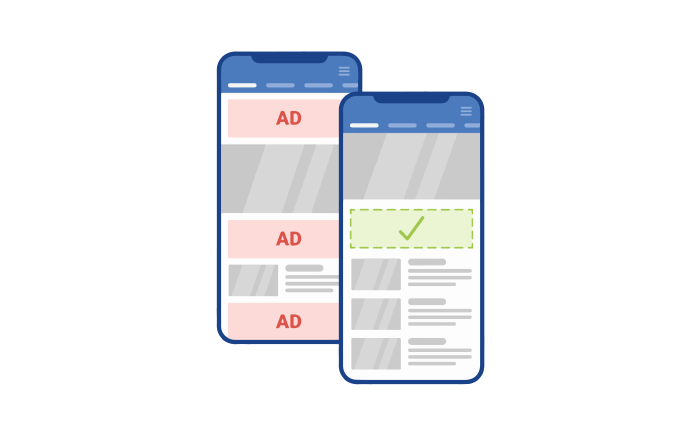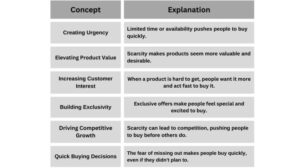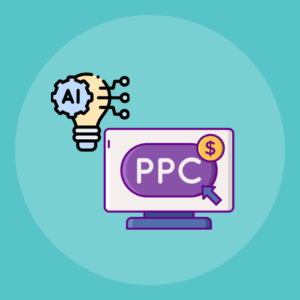
Optimizing website layout for ad clicks opens the door to a world where design meets functionality, enhancing not just the aesthetics but the user experience as well. A well-structured layout can significantly increase ad visibility and click-through rates, turning casual visitors into engaged users.
In this discussion, we’ll explore effective design strategies that leverage psychological insights on ad placement, ensuring your website not only captures attention but also drives conversions. We will delve into ways to enhance user interaction and seamlessly integrate advertisements without disrupting the flow of content.
Optimizing Website Layout for Ad Clicks
The layout of a website plays a crucial role in maximizing ad visibility and, ultimately, driving click-through rates (CTR). A well-structured design not only improves user experience but also strategically positions advertisements where they are most likely to attract attention. By understanding the psychological factors at play, web designers can create environments that enhance the likelihood of user interaction with ads.Effective design strategies are essential for increasing CTR.
When ads are seamlessly integrated into the website layout instead of appearing as disruptive elements, users are more inclined to engage with them. Key elements such as color contrast, size, and typography can influence how ads are perceived and whether they capture users’ attention.
Design Strategies for Enhanced Ad Visibility
To boost the effectiveness of ad placements, several design strategies should be implemented. These methodologies focus on making ads more noticeable while ensuring that they do not detract from the overall user experience.
1. Above the Fold Placement
Ads that are placed in the upper section of the webpage, visible without scrolling, generally receive higher visibility. This area captures users’ immediate attention when they land on the site.
2. Use of Contrasting Colors
Highlighting ads with colors that contrast against the website’s background can make them stand out. For example, a bright banner on a muted background can draw more eyes.
3. Strategic Use of White Space
Providing ample white space around ads can enhance their visibility. A cluttered layout may overwhelm users, causing them to overlook ads.
4. Incorporating Visual Elements
Graphics, animations, or videos can increase engagement levels significantly. Ads that incorporate appealing visual elements tend to attract more clicks.
5. Mobile Responsiveness
Given the rise of mobile browsing, ensuring ads are optimized for mobile devices is paramount. Ads should be easily viewable and clickable on smaller screens.
6. Testing and Analytics
Regularly testing different ad placements and styles can yield insights into what works best for a specific audience. Utilizing analytics tools to track CTR and user behavior helps in refining ad strategies.
“The placement and design of ads have a significant psychological impact on user behavior, influencing their likelihood to click.”
The strategic placement of ads also has psychological repercussions. When ads are positioned within the content that users are already engaged with, they are perceived as less intrusive. For instance, in-content ads that blend with the text can often convert better than traditional banner ads. Conversely, ads that pop up unexpectedly may irritate users, leading to a negative experience and potentially driving them away.Understanding the nuances of website layout in relation to ad placements is vital for optimizing ad clicks.
By carefully considering design strategies and the psychological impact on users, website owners can significantly enhance their ad performance.
Enhancing User Experience to Boost Ad Engagement
Creating a seamless and enjoyable user experience on websites is crucial for increasing ad engagement. When users find it easy to navigate and interact with the content, they are more likely to engage with the ads presented, leading to higher click-through rates and better overall performance for advertisers.To achieve this, several elements can significantly improve user interaction on websites. These elements are not only important for enhancing user experience but also play a pivotal role in ensuring that ads are viewed and clicked on effectively.
Elements that Improve User Interaction
Incorporating specific design and functional elements can greatly enhance user interaction. Here are key components to consider:
- Intuitive Navigation: A clear and straightforward navigation menu allows users to find what they are looking for without frustration.
- Fast Loading Times: Websites should be optimized for speed, as slow-loading pages can lead to high bounce rates.
- Engaging Content: High-quality, relevant content keeps users on the page longer and encourages them to explore more.
- Readable Text: Using a legible font size and sufficient contrast ensures that users can easily read the content.
- Visual Hierarchy: A well-structured layout directs users’ attention to important elements, including ads.
- Interactive Elements: Features such as buttons, sliders, and quizzes can engage users and lead to increased interaction.
Balancing content with ad placements is essential to maintain reader interest while optimizing ad visibility. Striking the right balance ensures that ads do not overwhelm the content but instead blend seamlessly into the user experience.
Balancing Content and Ad Placements
When integrating advertisements into web content, it is important to prioritize user experience while still achieving advertising goals. The following strategies can help maintain a balance:
- Strategic Placement: Position ads where users are likely to engage, such as within content or at natural break points, without infringing on readability.
- Relevant Ads: Serve ads that are relevant to the content being viewed, enhancing the likelihood of clicks due to user interest.
- Limit Ad Quantity: Avoid cluttering the page with too many ads, as this can detract from the content and frustrate users.
- Use Ad Formats that Fit: Opt for ad formats that complement the design, such as native ads that match the look and feel of the site.
- Test and Optimize: Regularly assess ad performance and user feedback to refine placements and formats for better engagement.
Responsive design plays an integral role in optimizing ads across various devices. As users access websites from smartphones, tablets, and desktops, ensuring a consistent and effective experience is vital.
The Role of Responsive Design in Optimizing Ads
Responsive design ensures that websites adapt seamlessly to different screen sizes and resolutions, which is crucial for ad performance. Here are the benefits of implementing responsive design:
- Consistent User Experience: Users enjoy a uniform experience across devices, increasing the likelihood of ad engagement regardless of how they access the site.
- Improved Loading Speeds: Responsively designed websites typically load faster on mobile devices, reducing bounce rates and enhancing ad visibility.
- Flexible Ad Formats: Ads can be adjusted to fit various screen sizes without losing impact, ensuring they remain engaging.
- Higher Reach: A responsive design attracts a broader audience, allowing for more ad impressions and potential clicks.
- Benefits: Search engines favor responsive sites, improving visibility and driving more traffic, which can translate to increased ad engagement.
Strategies for Integrating Advertisements without Disrupting Content

Integrating advertisements into a website can be a delicate balancing act. The goal is to enhance revenue without compromising the user experience or content integrity. By embedding ads thoughtfully into the layout, you can maintain user engagement while maximizing click-through rates. Here are some effective strategies to achieve this balance.
Techniques for Embedding Ads Seamlessly within Website Content
Effective ad integration relies on strategic placement that feels natural rather than intrusive. Here are key techniques for embedding ads within your content:
- In-line Ads: Position ads directly within the text content. This approach makes them an integral part of the reading experience. For instance, inserting relevant ads between paragraphs can capture attention without disrupting the flow.
- Content Recommendation Widgets: Use widgets that suggest advertisements based on user behavior and interests. These widgets can blend with your content, offering users ads that resonate more closely with their needs.
- Sticky Ads: Employ sticky ads that remain visible as users scroll down the page. These ads are less likely to distract users from the content while still ensuring visibility.
- Sponsored Content: Integrate sponsored posts that match the look and feel of your regular content. These can provide value to readers while seamlessly promoting products or services.
A/B Testing Different Ad Placements
A/B testing is essential for optimizing ad performance and user interaction. This method allows you to compare different ad placements to determine which ones yield the best results. The following steps Artikel how to effectively conduct A/B tests for ad placements:
Testing different ad placements can reveal valuable insights into user behavior and ad effectiveness.
- Identify Goals: Define what success looks like for your ads, such as click-through rates (CTR), conversion rates, or revenue generated.
- Create Variations: Develop multiple versions of the same webpage with different ad placements. For example, one version may have ads above the fold, while another places them at the bottom of the content.
- Segment Traffic: Direct a portion of your traffic to each version of the webpage. Ensure that the sample size is large enough to yield statistically significant results.
- Analyze Results: Use analytics tools to monitor performance metrics for each variation. Look for clear trends in user engagement and ad clicks.
- Implement Findings: Based on the analysis, implement the most effective ad placement across your website.
Using Analytics to Monitor Ad Performance
Analytics data is invaluable in understanding how users interact with ads on your website. By leveraging analytics tools, you can gain insights into ad performance and make informed adjustments to your strategy. Key aspects to monitor include:
- Click-Through Rates (CTR): This metric indicates the percentage of users who click on an ad relative to the number of impressions. A low CTR may signal that the ad placement needs adjustment.
- Ad Engagement: Measure how long users engage with ads. High engagement might indicate that ads are well-placed and relevant to the audience.
- Conversion Rates: Track the percentage of users who complete a desired action after clicking on an ad. This is crucial for understanding the effectiveness of the ad.
- User Behavior Flow: Analyze how users navigate through your site, noting when they are exposed to ads and how this affects their journey.
By continuously monitoring these analytics and adjusting your approach, you can optimize ad placements to ensure they complement your content instead of detracting from it.
Related Topics to Explore
Exploring related topics can enhance the effectiveness of optimizing your website layout for ad clicks. These areas not only complement ad strategies but also build a more user-friendly environment that ultimately drives revenue. Here’s a deep dive into these interconnected themes.
Link Popularity
Increasing your website’s link popularity is crucial for driving more ad clicks. Higher link popularity leads to improved search engine rankings, making your site more visible to potential visitors. Here are some effective approaches to enhance link popularity:
- Create High-Quality Content: Producing valuable, insightful, and engaging content naturally attracts backlinks from other sites.
- Engage in Guest Blogging: Writing guest posts for reputable blogs in your niche can not only showcase your expertise but also generate quality backlinks.
- Utilize Social Media: Sharing your content on social media platforms increases visibility and encourages others to link back to your site.
- Build Relationships: Networking with other bloggers and webmasters can facilitate link exchanges and collaborations that benefit both parties.
List Building
Effective list building enhances your ability to target ads effectively. Building a robust email list allows you to communicate directly with your audience, increasing engagement and ad performance. Here are strategies to develop a strong list:
- Offer Incentives: Providing free resources like eBooks or exclusive discounts can encourage visitors to subscribe to your list.
- Create Compelling Sign-Up Forms: Place sign-up forms strategically throughout your website to capture visitor interest without being intrusive.
- Utilize Pop-Ups Wisely: Well-timed pop-up forms can significantly increase sign-up rates when used sparingly and with valuable offers.
- Leverage Social Proof: Displaying testimonials or the number of subscribers can enhance credibility and encourage more sign-ups.
Paid Surveys
Incorporating paid surveys can complement your ad strategies by providing insights into user preferences and behaviors. Surveys not only engage users but also gather crucial data that can refine ad targeting strategies:
- Identify Audience Interests: Surveys can reveal what products or services your audience values, helping tailor your ad content.
- Enhance User Engagement: Offering small rewards for completing surveys can increase user interaction with your website.
- Collect Feedback: Understanding user experience through surveys allows you to make informed adjustments to your ad placements and overall layout.
Podcasting
Leveraging podcasting can generate traffic to ad-supported content by reaching audiences that prefer audio format. Here’s how to effectively integrate podcasting into your strategy:
- Integrate Ads Naturally: Including sponsorship messages or product mentions within your podcast can seamlessly connect your audience with your offerings.
- Promote Your Website: Use your podcast to highlight blog posts or content that supports your ads, directing listeners to your site.
- Build a Community: Engaging listeners through social media or community discussions can increase interest in your website and its ads.
PPC Advertising
Integrating PPC advertising strategies with your website layout is essential for achieving optimal results. PPC allows you to target specific audiences effectively. Consider these strategies:
- Optimize Landing Pages: Ensure landing pages are closely aligned with ad content to enhance relevance and conversion rates.
- Use A/B Testing: Experimenting with various ad placements and designs can help identify what resonates best with your audience.
- Monitor Performance Metrics: Regularly analyzing click-through rates and conversion statistics helps refine your PPC strategies for maximum profitability.
PPC Publishing
Adhering to best practices in PPC publishing ensures that your ad formats align well with your website design, thereby increasing revenue potential. Important practices include:
- Maintain Visual Consistency: Ensure that ad designs match the overall aesthetic of your website to avoid alienating visitors.
- Prioritize Load Speed: Fast-loading pages improve user experience and ad visibility, leading to better engagement.
- Implement Responsive Ads: Use ads that adapt to different devices, ensuring a seamless experience across platforms.
Product Creation
Creating products that resonate with your audience’s interests can significantly boost ad performance. Here are some ways to align product creation with audience preferences:
- Conduct Market Research: Understanding what your audience needs helps in developing products that will attract their attention.
- Utilize Feedback: Incorporating user feedback in the product development process enhances satisfaction and ad effectiveness.
- Showcase Benefits: Highlighting the advantages of your products in your ads can lead to higher engagement and conversions.
Product Launching
Launching products effectively maximizes ad visibility and user engagement. Here are strategies for successful product launches:
- Create Buzz: Build anticipation through teasers and sneak peeks on social media leading up to the launch.
- Leverage Influencer Partnerships: Collaborating with influencers can amplify your reach and attract more visitors to your ads.
- Offer Exclusive Launch Promotions: Incentives such as early bird discounts can encourage immediate purchases and drive traffic to your site.
Epilogue

In conclusion, optimizing your website layout for ad clicks is not just about placement but about creating a harmonious balance between content and advertising. By implementing user-centric design principles and leveraging analytics, you can ensure that your ads not only reach but resonate with your audience, ultimately leading to better engagement and increased revenue.
FAQ Summary
What is the best ad placement for maximizing clicks?
The best ad placement often depends on user behavior, but common effective spots include above the fold, in the content stream, and at the end of articles.
How does responsive design affect ad performance?
Responsive design ensures ads are displayed correctly on all devices, improving visibility and user experience, which can lead to higher engagement rates.
What role does A/B testing play in ad optimization?
A/B testing allows you to compare different ad placements and formats to determine which performs better, enabling data-driven decisions for optimization.
How can I balance content and ads effectively?
To balance content and ads, ensure that ads are relevant to the content and placed strategically to avoid overwhelming the user while maintaining engagement.
What tools can I use to monitor ad performance?
Tools like Google Analytics, AdSense reports, and heatmaps can help you track ad performance, understand user interactions, and make informed adjustments.





